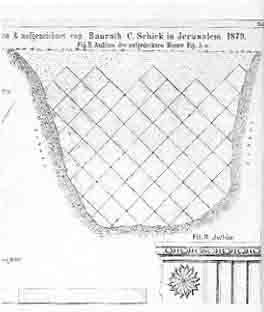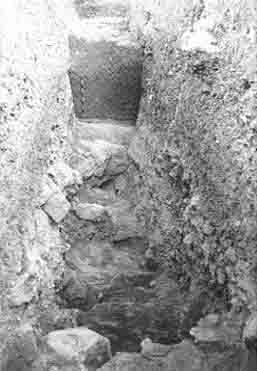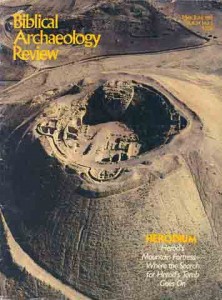Opus Reticulatum
Sidebar to: Herod’s Family Tomb in Jerusalem

In 1879, Conrad Schick, the famous Swiss architect and archaeologist, discovered and explored and drew this section of opus reticulatum wall near the Damascus Gate in Jerusalem. In 1977, Israeli archaeologist Ehud Netzer returned to Schick’s site, where he uncovered more of the patterned stonework, for example the small area below at the end of an excavation trench. Netzer noted that all of this opus reticulatum stonework was part of a circular wall 100 feet in diameter. Netzer claims that the wall encloses Herod’s family tomb.

Opus reticulatum was a Roman building technique common in Italy but rarely seen in the Near East. An example of it is seen below from Herod’s winter palace at Jericho. The opus reticulatum wall at left has been restored above the dark lower level of the wall, as part of a BAR preservation project. It clearly shows the characteristic graceful lattice pattern of stones.
Already a library member? Log in here.
Institution user? Log in with your IP address.

